Lymphatics and fibroblasts support intestinal stem cells in homeostasis and injury
- PMID: 35931033
- PMCID: PMC9720889
- DOI: 10.1016/j.stem.2022.06.013
Lymphatics and fibroblasts support intestinal stem cells in homeostasis and injury
Abstract
Lgr5+ intestinal stem cells (ISCs) depend on niche factors for their proper function. However, the source of these ISC niche factors and how they support ISCs in vivo remain controversial. Here, we report that ISCs depend on lymphatic endothelial cells (LECs) and RSPO3+GREM1+ fibroblasts (RGFs). In the intestine and colon, LECs are surrounded by RGFs and are located near ISCs at the crypt base. Both LECs and RGFs provide the critical ISC niche factor RSPO3 to support ISCs, where RSPO3 loss in both cell types drastically compromises ISC numbers, villi length, and repair after injury. In response to injury, LEC and RGF numbers expand and produce greater amounts of RSPO3 and other growth/angiocrine factors to foster intestinal repair. We propose that LECs represent a novel niche component for ISCs, which together with RGFs serve as the major in vivo RSPO3 source for ISCs in homeostasis and injury-mediated regeneration.
Keywords: Lgr5; RSPO3; fibroblast; intestinal stem cell; lymphatic endothelial cell.
Copyright © 2022 Elsevier Inc. All rights reserved.
Conflict of interest statement
Declaration of interests Ö.H.Y. holds equity and is an SAB member in Ava Lifesciences. Ö.H.Y. receives research support from Microbial Machines.
Figures
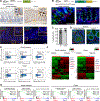
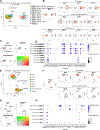


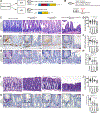
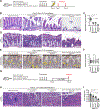
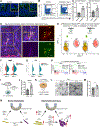
Comment in
-
Lymphatic endothelia stakeout cryptic stem cells.Cell Stem Cell. 2022 Sep 1;29(9):1292-1293. doi: 10.1016/j.stem.2022.08.006. Cell Stem Cell. 2022. PMID: 36055189
References
-
- Barker N, van Es JH, Kuipers J, Kujala P, van den Born M, Cozijnsen M, Haegebarth A, Korving J, Begthel H, Peters PJ, et al. (2007). Identification of stem cells in small intestine and colon by marker gene Lgr5. Nature 449, 1003–1007. - PubMed
Publication types
MeSH terms
Grants and funding
LinkOut - more resources
Full Text Sources
Other Literature Sources
Medical
Molecular Biology Databases

